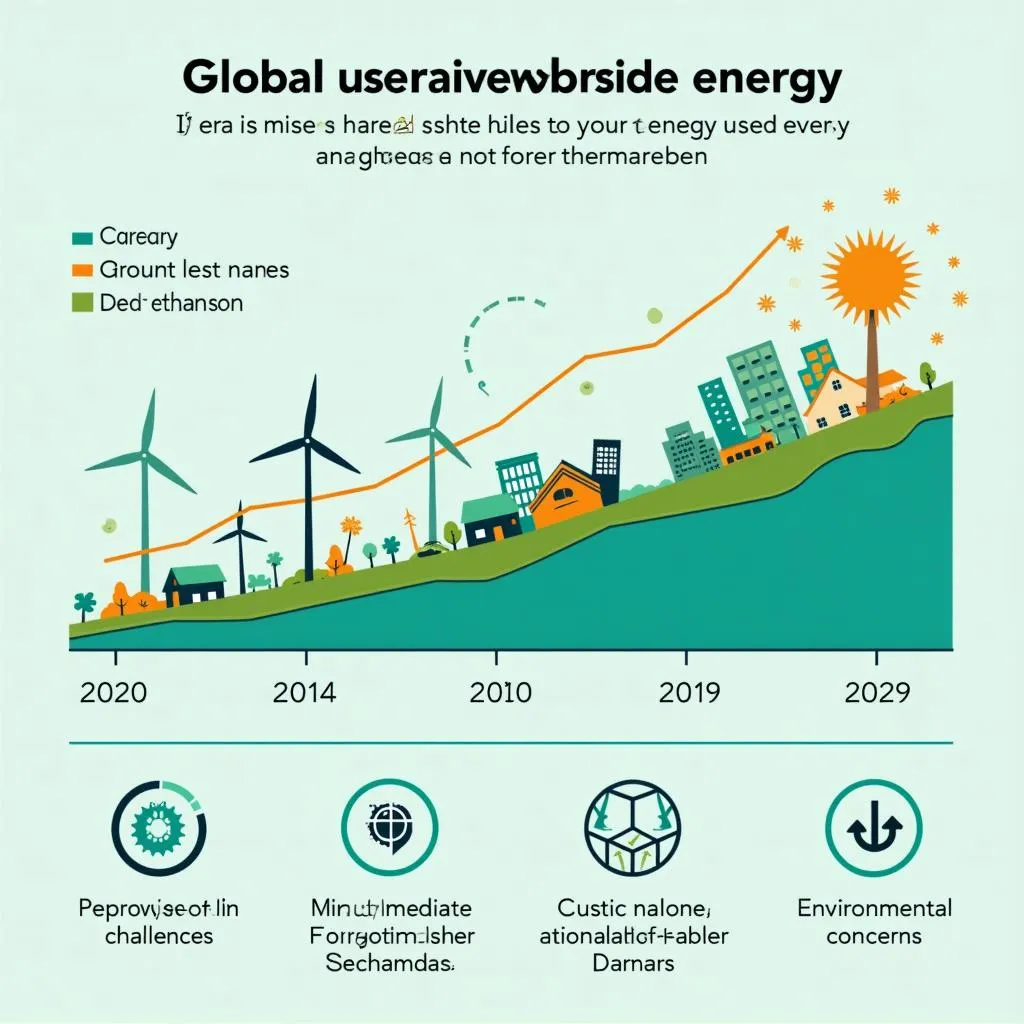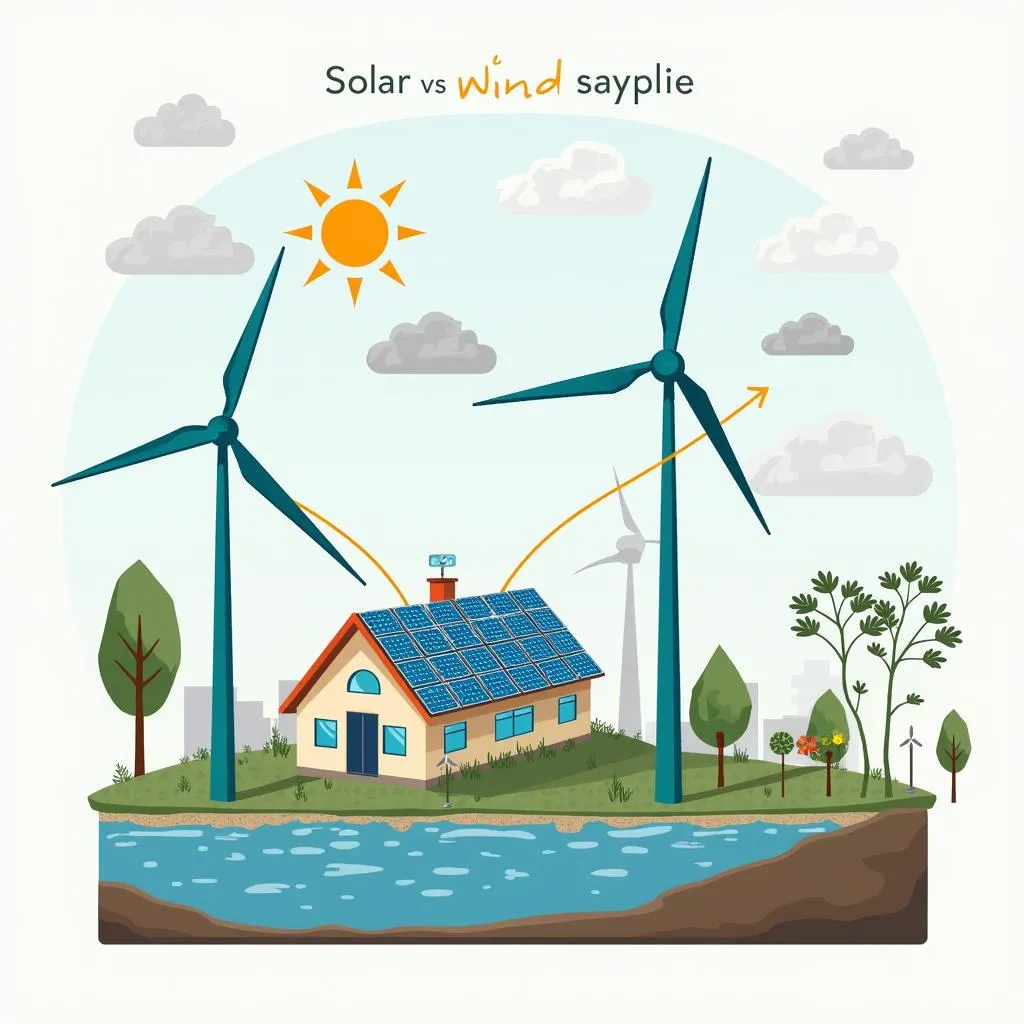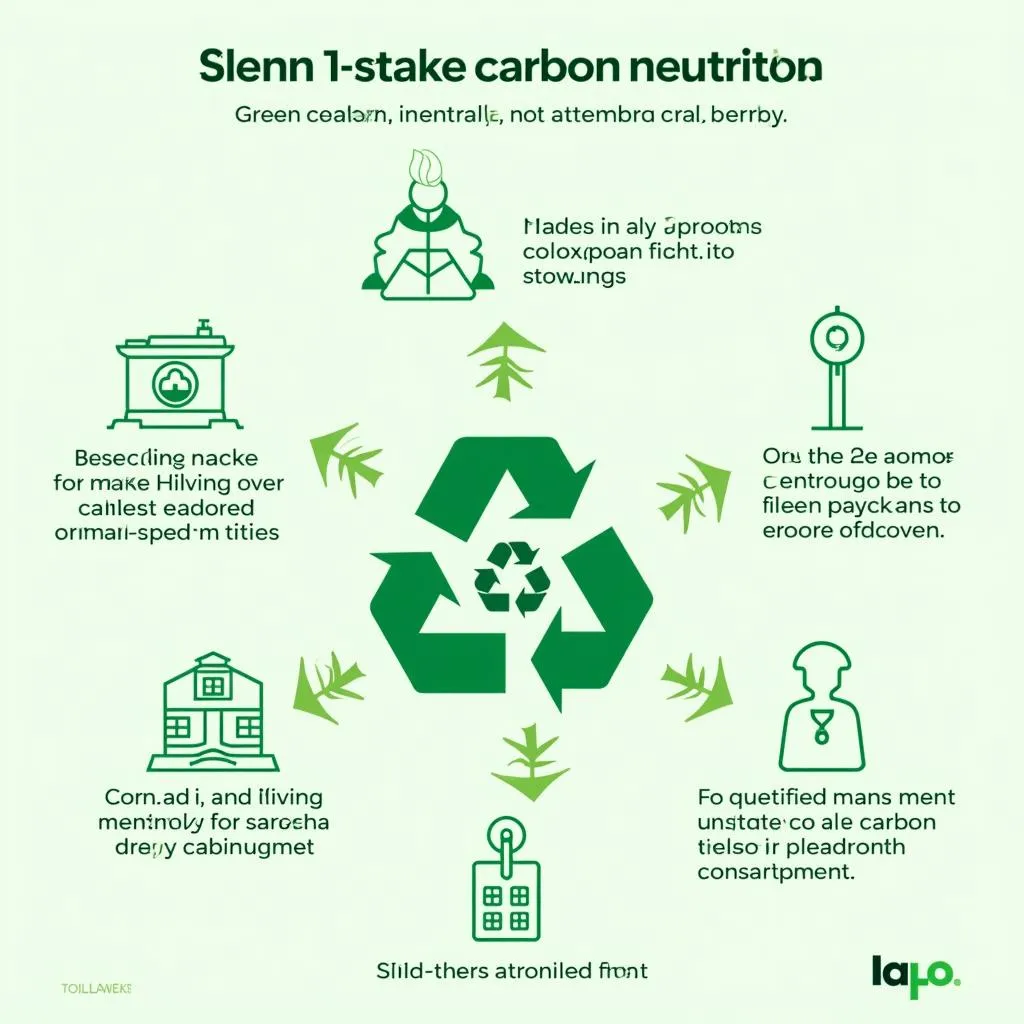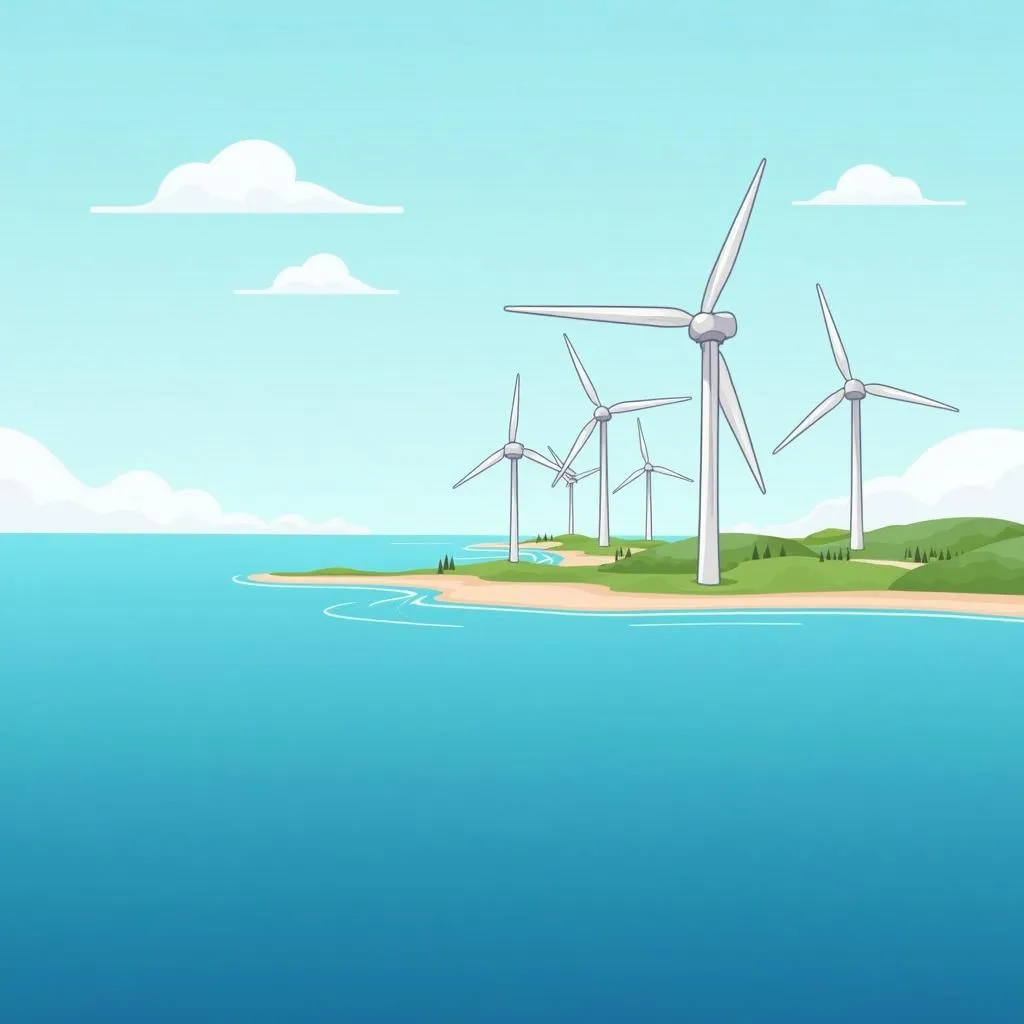In the PTE Academic exam, mastering the Summarize Written Text section is essential, particularly when dealing with popular topics like Renewable Energy And Carbon Neutrality. This task is pivotal in determining your ability to summarize a lengthy text into a concise sentence, covering key points without losing clarity. To support your preparation, this guide will provide sample questions revolving around renewable energies and strategies for carbon neutrality.
Sample Summarize Written Text Tasks for PTE Exam Preparation
To help you practice, here are some model questions pertaining to “Renewable Energy and Carbon Neutrality” in the Summarize Written Text section. Each question mirrors the structure of real PTE tasks, presenting a challenging passage to summarize in one sentence.
Example 1: Renewable Energy in a Global Context
Over the past few years, renewable energy sources like solar, wind, and hydro have seen significant adoption globally due to environmental concerns and the need for sustainable development. Solar energy has emerged as one of the leading sources of power, with countries such as China, the United States, and Germany investing heavily in photovoltaic systems. Wind energy has also gained traction, particularly in offshore installations where wind speeds are higher and power output is more stable. However, despite the growth of renewables, there are persistent challenges, such as high initial investment costs, the need for advanced energy storage solutions, and the environmental impact of manufacturing renewable energy components like solar panels and wind turbines. Transitioning to renewable energy is essential for achieving carbon neutrality, but it requires coordinated global efforts and continuous innovation in technology to overcome these challenges.
Summarize the text in one sentence:
In one sentence, summarize the main ideas of the passage.
 Global renewable energy adoption and key challenges
Global renewable energy adoption and key challenges
Example 2: Transition to Carbon Neutrality
Achieving carbon neutrality has become a target for numerous cities and countries as part of their climate change mitigation strategies. Carbon neutrality refers to balancing emitted carbon with an equivalent amount of carbon removed from the atmosphere through techniques such as reforestation, carbon capture, and embracing renewable energy. Urban centers are implementing sustainable practices by upgrading infrastructure to be more energy efficient, encouraging the increased use of public transportation, and promoting renewable energy solutions. However, one of the major hurdles faced by many cities is the financial costs associated with adopting and maintaining these green solutions, which can be prohibitively high for developing regions. Long-term carbon neutrality efforts must deal with not only cost but also the population growth that drives higher energy and resource consumption.
Summarize the text in one sentence:
In one sentence, summarize the main ideas of the passage.
Model Answers with Band Score Analysis
For Example 1:
Band 90:
Renewable energy is growing globally, with solar and wind power leading the way, but high costs and technological challenges require innovative solutions for achieving global carbon neutrality.
Analysis:
- Content: Excellent coverage of the main ideas—growth in renewable energy sources and the challenges to achieving carbon neutrality.
- Form: Correct length (one sentence).
- Grammar: Flawless grammar with complex sentence structure.
- Vocabulary: Good use of advanced vocabulary linked to the topic (“carbon neutrality,” “innovative solutions”).
- Spelling: No errors.
 Solar and wind energy infrastructure concept
Solar and wind energy infrastructure concept
Band 75:
Solar and wind energy are expanding globally, but their costs and environmental challenges must be addressed to achieve sustainability goals.
Analysis:
- Content: Key aspects covered (solar and wind energy, global expansion, cost issues).
- Form: Correct length.
- Grammar: Generally correct but simpler than a Band 90 response.
- Vocabulary: Adequate vocabulary but lacks the complexity of Band 90.
- Spelling: No errors.
Band 65:
Renewable energy is growing, but there are still challenges like cost and environmental issues.
Analysis:
- Content: Basic ideas present but not fully developed.
- Form: Sentence within the required length.
- Grammar: Mostly correct but lacks complexity.
- Vocabulary: Limited vocabulary; lacking specificity.
- Spelling: No issues.
For Example 2:
Band 90:
Cities striving for carbon neutrality are promoting renewable energy and implementing sustainable infrastructure, but face challenges such as high financial costs and growing resource consumption.
Analysis:
- Content: Comprehensive, covering all aspects of the passage, including long-term challenges and solutions.
- Form: Correct one-sentence structure.
- Grammar: Complex sentence structure with correct punctuation.
- Vocabulary: Advanced vocabulary with precise terms like “sustainability,” “infrastructure,” and “resource consumption.”
- Spelling: No errors.
 Carbon neutrality challenges for cities and strategies
Carbon neutrality challenges for cities and strategies
Band 75:
Many cities are working toward carbon neutrality by focusing on renewable energy, but cost remains a major challenge.
Analysis:
- Content: Covers the main points but lacks detail on sustainable practices and specific challenges.
- Form: Correct length.
- Grammar: Mostly error-free but overly simplified.
- Vocabulary: Appropriate but lacks the advanced terms seen in higher band responses.
- Spelling: No issues.
Band 65:
Carbon neutrality efforts in cities face high costs despite using renewable energy.
Analysis:
- Content: Presents only the key idea, leaving out discussions on sustainability and resource challenges.
- Form: One sentence, as required.
- Grammar: Basic but correct.
- Vocabulary: Simple and undeveloped.
- Spelling: No errors.
Vocabulary and Grammar Insights
To excel in the Summarize Written Text task, understanding and employing advanced vocabulary is crucial. Below are 10 vital words/terms relevant to this topic, along with their meanings and examples:
-
Photovoltaic /ˌfəʊtəʊvɒlˈteɪɪk/ (adj.) – relating to the conversion of light into electricity using semiconducting materials.
Example: The installation of photovoltaic cells surged in many countries. -
Carbon Capture /ˈkɑːrbən ˈkæptʃər/ (n.) – technology used to trap carbon dioxide emissions from sources like power plants and store it underground.
Example: Carbon capture technology offers a way to reduce emissions from industrial sites. -
Sustainable /səˈsteɪnəbl/ (adj.) – the ability to maintain or improve environmental standards without depleting resources.
Example: Sustainable living is crucial for achieving carbon neutrality. -
Offshore /ˌɒfˈʃɔː/ (adj.) – located at sea, away from the coast.
Example: Offshore wind farms are an increasingly popular renewable energy source.
 Key advantages of offshore wind farms
Key advantages of offshore wind farms
-
Infrastructure /ˈɪnfrəstrʌktʃə/ (n.) – fundamental physical systems such as transportation, energy, and communication.
Example: Governments must improve infrastructure to support renewable energy. -
Mitigation /ˌmɪtɪˈɡeɪʃən/ (n.) – actions taken to reduce the severity of something, such as climate change impacts.
Example: Cities must focus on the mitigation of climate risks. -
Emission /ɪˈmɪʃən/ (n.) – the production and release of pollutants, especially greenhouse gases.
Example: Reducing carbon emissions is key to fighting climate change. -
Balancing /ˈbælənsɪŋ/ (v.) – to equalize or stabilize, in this context for carbon emissions.
Example: The city is balancing emissions by planting trees. -
Populational Growth /ˌpɒpjəˈleɪʃn̩ ɡrəʊθ/ (n.) – the increase in the number of people in a particular region over time.
Example: Rapid population growth hampers efforts to achieve carbon neutrality. -
Resource Consumption /rɪˈzɔːs kənˈsʌmʃən/ (n.) – the use of natural resources by humans.
Example: Higher resource consumption impacts sustainability.
Conclusion
Mastering the Summarize Written Text section of the PTE exam is essential, particularly when covering topics as widespread and relevant as renewable energy and carbon neutrality. By practicing with the provided examples and learning from the answer analyses, you can elevate your performance and approach the real exam with confidence. Be sure to also explore related areas, such as Nuclear power and renewable energy coexistence or Global initiatives for climate change, to further enrich your understanding and vocabulary.